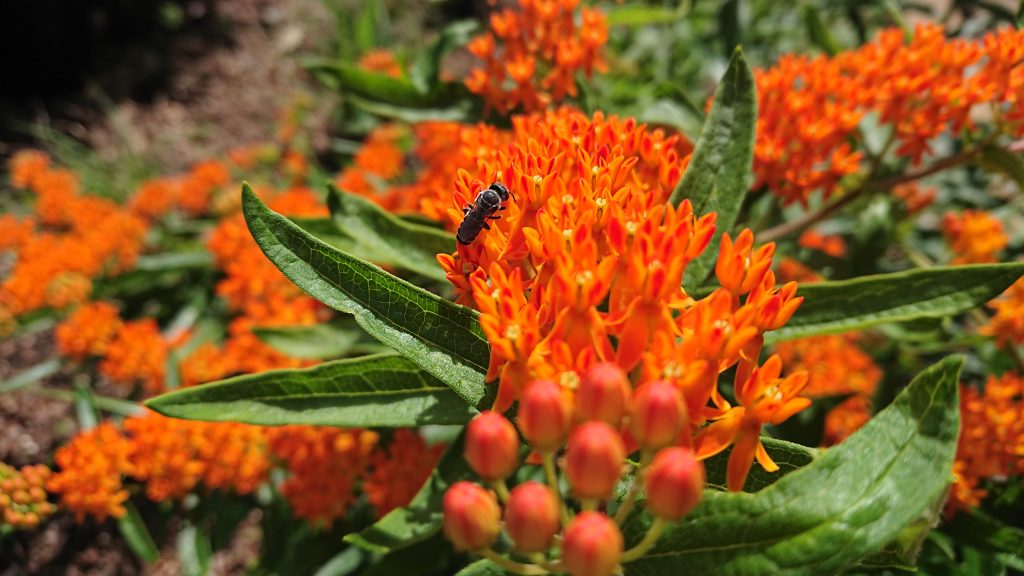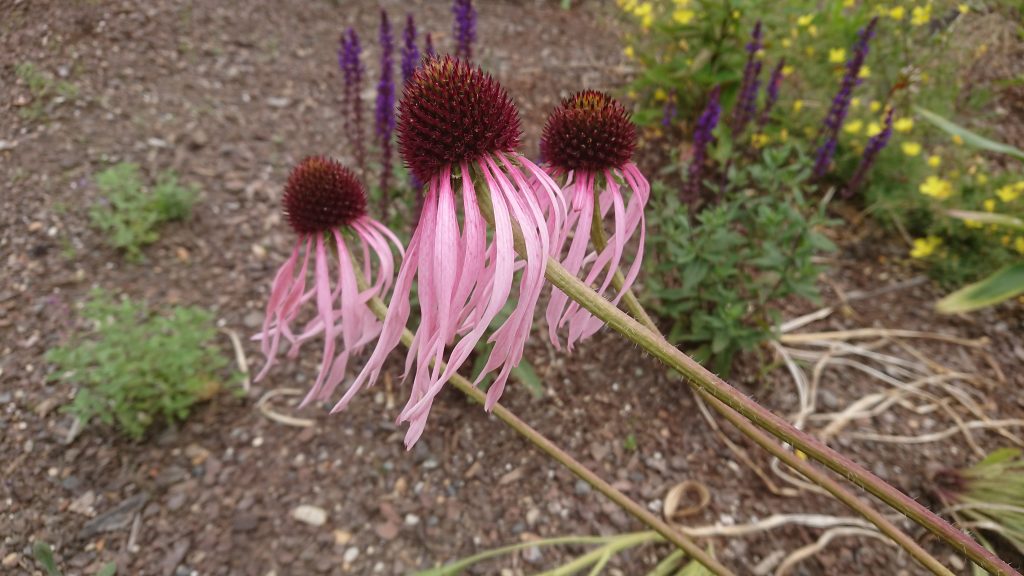Native Flowers: The Perfect Addition to your Garden
There are so many stunningly beautiful Virginia native flowers, but some plants can do so much more than just add beauty to the landscape. Here at Lewis Ginter Botanical Garden, we have many species planted specifically to attract birds and butterflies and to boost the ecological health of our gardens. While native plants are featured in many parts of the Garden, Senior Horticulturist Elizabeth Fogel has been working over the past two years to create conservation landscaping along the edge of Sydnor Lake demonstrating good stormwater management practices while providing great habitat value for native wildlife. Here are some of our favorite native flowers from around the Garden.
Butterfly Weed
Asclepias tuberosa, commonly called butterfly weed, is a type of milkweed with bright orange flower clusters. For me, even more, incredible than the flower is this plant’s ability to (as the common name suggests) attract those flying flowers — butterflies. Milkweed is best known for attracting monarchs. Monarchs, like a lot of butterfly species, are very picky when it comes to finding suitable plants for their eggs and caterpillars. Milkweed is their plant of choice, so if you are looking to attract monarchs, make sure you are supporting each phase of their life by providing them with milkweed. Asclepias tuberosa also attracts honey bees, bumblebees, and queen butterflies making it a wonderful addition to any garden in need of pollinators. Anywhere you see Asclepias tuberosa look for signs of monarch caterpillars or butterflies! Here at Lewis Ginter Botanical Garden, you’ll find loads of it (and also most stages of monarch) in the Children’s Garden.
Golden Alexander
Golden Alexander (Zizia aurea) is a member of the carrot family that boasts elegant, flat-topped clusters of small yellow flowers — a favorite of many species of butterflies and bees. This plant acts as a host to caterpillars of Missouri woodland swallowtail and black swallowtail butterflies. In addition to attracting pollinators and beautifying the landscape, Zizia aurea also acts as a natural pesticide. Wherever possible Lewis Ginter Botanical Garden avoids the use of synthetic pesticides, so one useful practice in preventing pest infestations is growing plants that attract natural predators of pests, or beneficial insects. This can be seen in action in the Morton Native Plant Garden where Zizia is planted in close proximity to milkweed. Highly susceptible to aphid infestations, milkweed benefits from the syrphid flies that are attracted to Zizia. The larva of syrphid flies eats aphids, like the ones that attack milkweed. So, if you are looking for pest prevention in your own gardens, golden Alexander can be a very useful tool for you. Fogel says that the yellow haze of Zizia flowers has been one of her favorite additions to the spring blooms near Sydnor Lake.
Native Trumpet Honeysuckle
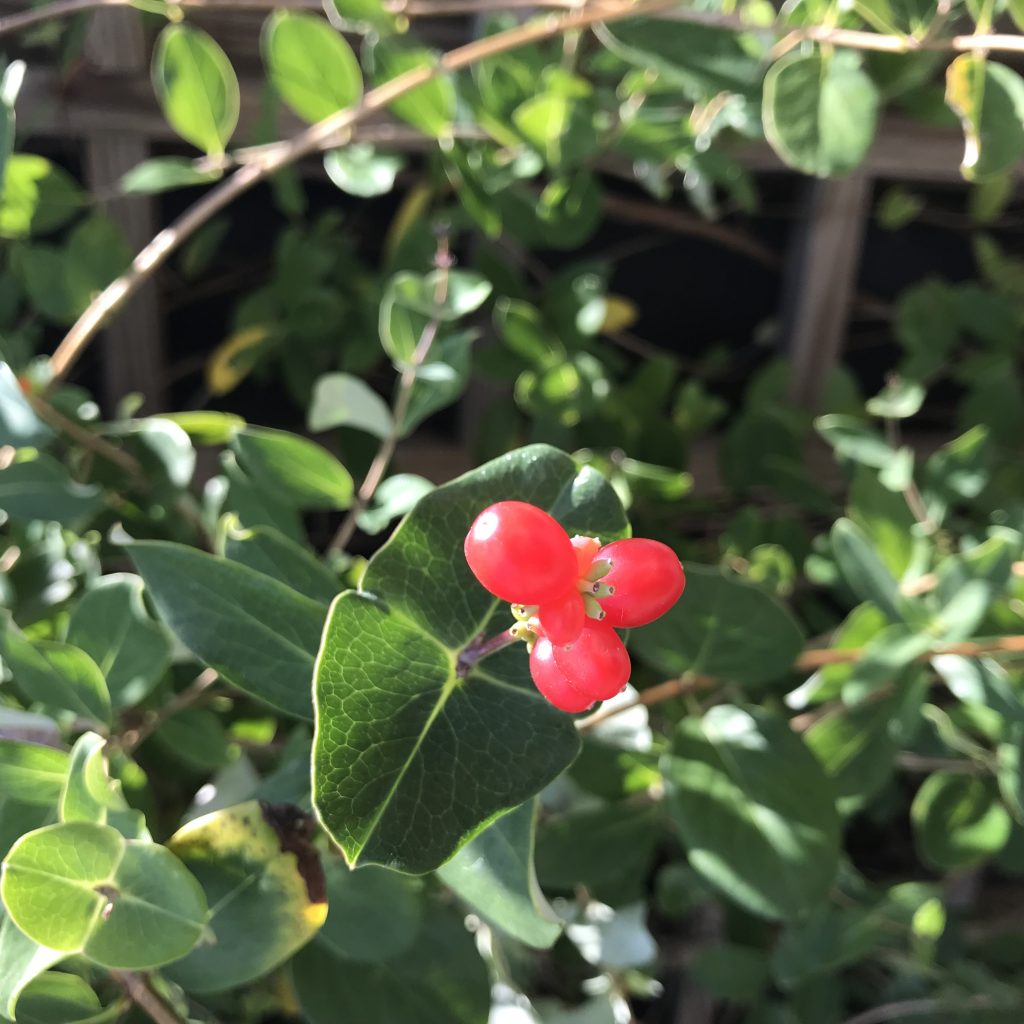
Songbirds, including quail, goldfinches, thrushes, and robins, are attracted to the fruit of Lonicera sempervirens, or native trumpet honeysuckle.
Lonicera sempervirens, or trumpet honeysuckle, is a semi-evergreen woody vine that produces bright red or pink tubular flowers from late spring into the fall. Unlike the more widely known Japanese honeysuckle, trumpet honeysuckle is not invasive and won’t take over your garden. This plant attracts many species of butterflies, especially spring azure butterflies — trumpet honeysuckle is a host for their caterpillars. Birdwatchers take note! Hummingbirds are attracted to trumpet honeysuckle flowers and many songbirds, including quail, goldfinches, thrushes, and robins, are attracted to the fruit. “I planted this native vine on the railing by my own front door so that I can easily watch the hummingbirds,” says Fogel. “This year, a monarch caterpillar from my nearby milkweed chose the shelter of this vine for its chrysalis stage.” You can see it at Lewis Ginter Botanical Garden in Flagler Garden.
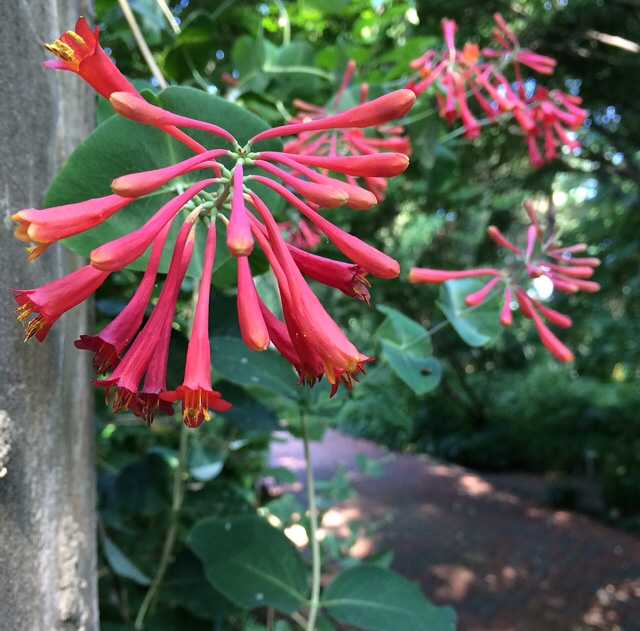
The native flower of coral honeysuckle, Lonicera sempervirens, blooming at Lewis Ginter Botanical Garden in Flagler Garden.
Purple Prairie Clover
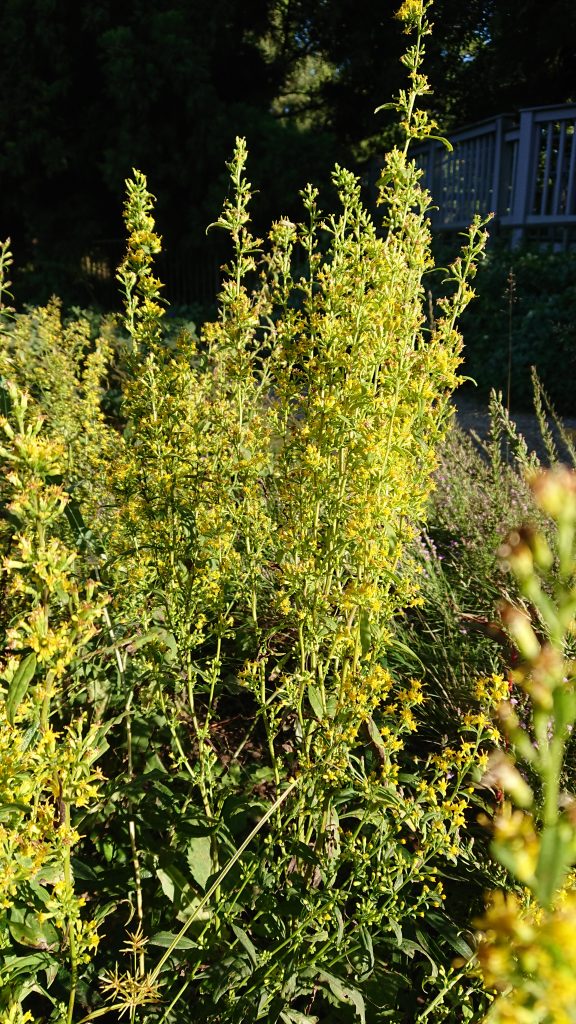
The bright yellow blooms of broadleaf goldenrod, Solidago flexicaulis, add color and texture to garden beds while supporting wildlife.
The distinctive bright pink-purple cylindrical flower heads of the native Dalea purpurea are the first thing you’ll notice about this plant, also called purple prairie clover. Beginning mid-summer, flowers start to bloom at the base of the spike structure. As the season continues, flowers bloom higher up on the cone until August when blooms have reached the top of the flowerhead. These flowers attract many types of bees including honeybees, bumblebees, and leaf-cutter bees as well as pest-eating insects such as syrphid flies. Purple prairie clover is in the legume family and can also help maintain a healthy soil structure in two ways. First, its taproot securely anchors the plant deep in the soil, greatly reducing the effects of wind erosion. Second, it’s a nitrogen-fixing plant, meaning it helps restore vital nutrients to the soil for other plants to use. Fogel adds, “While this Dalea is not native specifically to Virginia, it is native to much of North America. The many ecological services it provides makes this a valuable addition to your garden, but it is not the right choice if your goal is a garden of strictly Virginia natives.”
Broadleaf Goldenrod
Broadleaf goldenrod (Solidago flexicaulis) will add color to your garden well into October. The perennial boasts small yellow clusters of flowers bunched together around its stems. Its late-season blooms make it an important food source for honey bees, bumblebees, and butterflies after most of the summer blooms have died back. And for the birdwatchers out there – seeds from Solidago flexicaulis will attract swamp sparrows and pine siskins. You can see broadleaf goldenrod along the edge of Lake Sydnor near the Children’s Garden.
Pale Purple Coneflower
Echinacea pallida, or pale purple coneflower, is a semi-evergreen perennial known for its bright, distinctive purple flowers and large seed heads. The bright flowers are a favorite food source for butterflies and other pollinators including silvery checkerspot butterfly, wavy lined emerald moth, and common eupithecia moth caterpillars especially love the flowerheads. Even after the bloom has died back, the seed head is a prized and valuable food source to songbirds in the winter. Goldfinches are especially attracted to the seeds. You can see Echinacea pallida for yourself in several spots at Lewis Ginter: Flagler Garden, the Four Seasons Garden, along the banks of Sydnor Lake, and in the Morton Native Plant Garden. Make sure to keep an eye out for those goldfinches!
These and other native plants add amazing beauty to any landscape. On top of their natural beauty, these native flowers all help boost the ecological health of their surroundings by supporting native insects and birds. “A healthy garden is full of all types of life,” says Fogel. The next time you encounter one of these plants, take a moment to look at the insects or birds on and around the plant. Sometimes, standing in the garden, I am amazed at just how many visitors some plants receive in just a few minutes!
